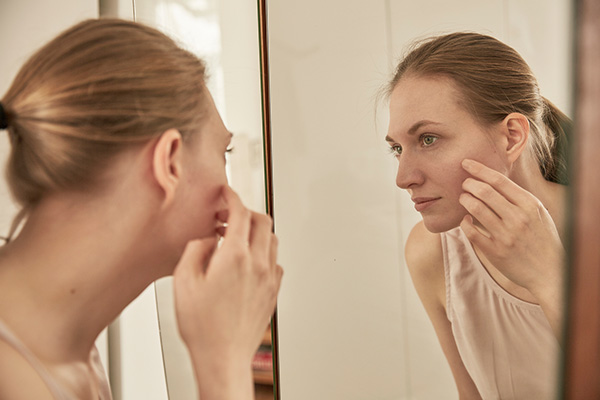How to Diagnose Psoriasis: A Detailed Guide for Beauticians?
As a beautician, understanding how to diagnose psoriasis is essential for providing effective skin care solutions. Psoriasis is a chronic autoimmune condition that affects the skin, causing red, flaky patches covered with silvery scales. Properly identifying this condition can lead to better treatment options for clients and improved overall skin health. In this article, we will delve into the signs and symptoms, methods of diagnosis, and how beauticians can play a pivotal role in the management of psoriasis.

Understanding Psoriasis: What Beauticians Need to Know
Before diving into how to diagnose psoriasis, it is crucial to understand what psoriasis is. This condition is characterized by an overproduction of skin cells, leading to the formation of raised, red patches on the skin.
These patches can appear anywhere on the body but are most commonly found on the elbows, knees, scalp, and lower back. Knowing the common types of psoriasis, such as plaque psoriasis, guttate psoriasis, and inverse psoriasis can aid in accurate diagnosis.
Signs and Symptoms of Psoriasis
As an expert beautician, being aware of the signs and symptoms that your clients might exhibit is key. Here are some common indicators:
- Red patches of skin covered with thick, silvery scales.
- Dry, cracked skin that may bleed.
- Itching and burning sensations.
- Thickened, pitted, or ridged nails.
- Soreness around areas where psoriasis appears.
How to Diagnose Psoriasis: Steps for Beauticians
Diagnosing psoriasis may involve several steps. Although beauticians are not medical professionals, knowing how to perform a basic assessment can be invaluable. Here is a step-by-step guide:
- Medical History: Start by asking your client about their medical history, focusing on family tendencies toward skin problems or autoimmune conditions.
- Visual Assessment: Perform a visual inspection of the affected areas. Note the size, shape, and distribution of any plaques.
- Consultation: Consult with a dermatologist if the case appears severe. A dermatologist can confirm the diagnosis and rule out other skin conditions.
Sneaky signs of psoriasis are crucial for accurate identification.
Types of Psoriasis to Recognize
Recognizing the different types of psoriasis can further assist in a refined diagnosis:
- Plaque Psoriasis: This is the most common type, characterized by thick, red patches covered with silvery scales.
- Guttate Psoriasis: Often begins in childhood or young adulthood and appears as small, drop-shaped lesions.
- Inverse Psoriasis: Occurs in skin folds, such as under the breasts or in the groin area, and often appears as smooth, red patches.
- Psoriatic Arthritis: Affects joints and can lead to swelling and reduced mobility.
The Importance of Early Diagnosis
Early diagnosis is vital for effective management of psoriasis. It not only helps in managing the symptoms but also significantly impacts the quality of life for clients. A beautician's awareness of the signs can lead to timely referrals to dermatologists, ensuring swift treatment.
Furthermore, you'll find enhanced relief and satisfaction from clients when early intervention leads to positive outcomes! For more insights about psoriasis, visit NIAMS.
Common Diagnostic Tools and Techniques
While beauticians may not perform medical diagnoses, understanding some common tools can help in making observations:
- Skin Biopsy: A small sample of skin may be taken for lab analysis to confirm the diagnosis.
- Dermatoscopes: This tool magnifies the skin's surface, allowing for detailed examination.
In general, awareness of these tools aids beauticians in understanding the diagnostic process better.
Psoriasis Treatments and Home Care Advice
As beauticians, it's important to provide clients with holistic advice, including what home care solutions they can adopt alongside medical treatments. These might include:
- Moisturizing: Apply gentle moisturizers to prevent dryness and cracking.
- Sunlight Exposure: Moderate sunlight can improve psoriasis symptoms, but ensure your client uses safe sun exposure practices.
- Dietary Changes: Encouraging a balanced diet rich in Omega-3 fatty acids can have positive effects.
For comprehensive treatment options, check this link: Curing psoriasis.
Common Mistakes Beauticians Should Avoid
While providing advice, beauticians should avoid common misconceptions:
- Assuming all skin conditions are the same.
- Not referring clients to dermatologists when necessary.
- Using irritating products on affected skin.

Final Thoughts
As a beautician, understanding how to diagnose psoriasis can not only improve your skills but also enhance the quality of care you provide to your clients. Remember, early detection is crucial, and your role in the diagnostic process can lead to improved outcomes for those suffering from this condition.
FAQ Section
- Q1: Can psoriasis be cured?
- A: Currently, there is no cure for psoriasis, but various treatments can help manage symptoms.
- Q2: How can I support clients with psoriasis?
- A: Provide education, recommend gentle skincare products, and encourage consultation with dermatologists.
- Q3: Are there any non-medical treatments for psoriasis?
- A: Moisturizers and lifestyle changes, such as diet and stress management, can help alleviate symptoms.

